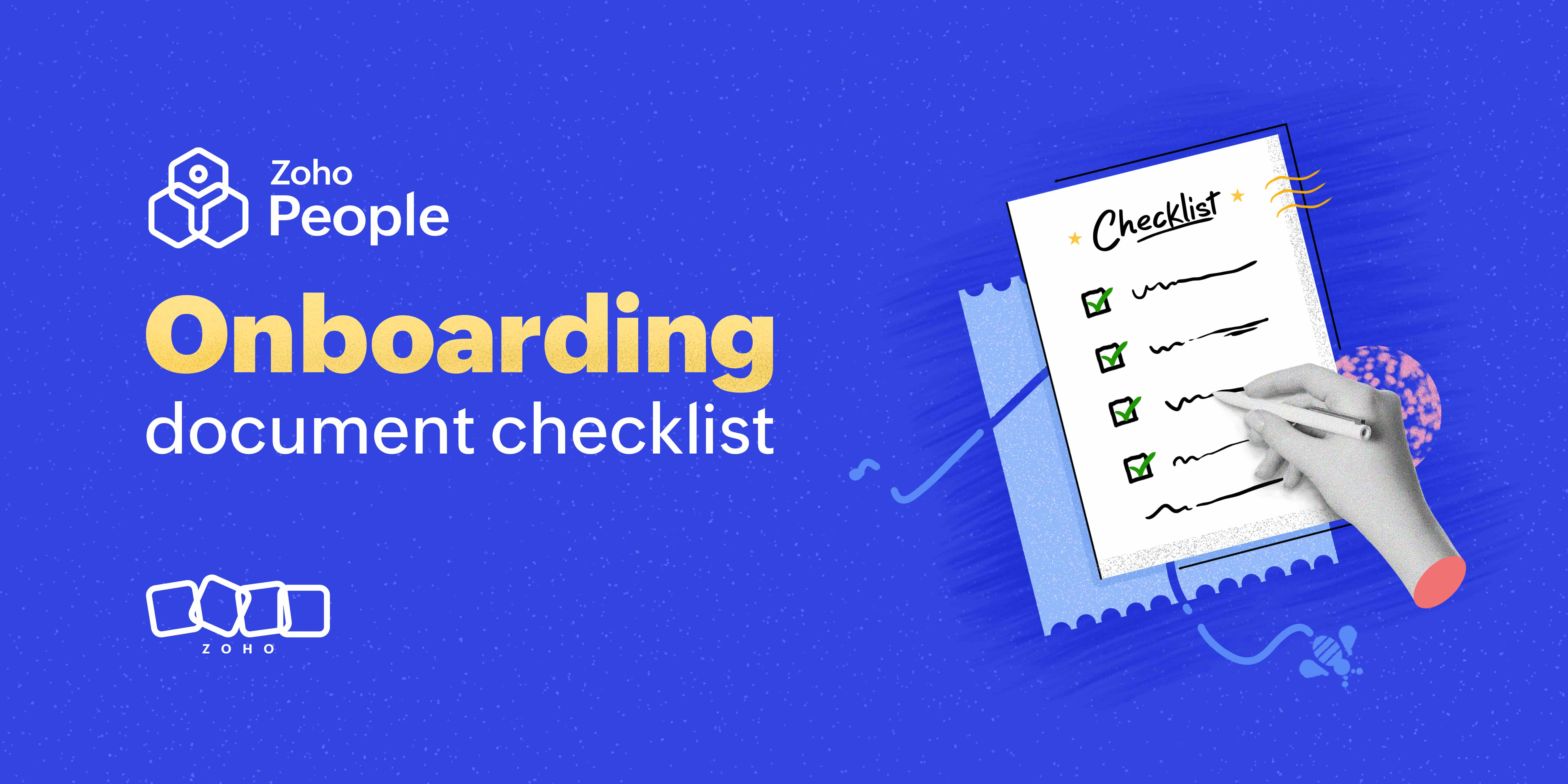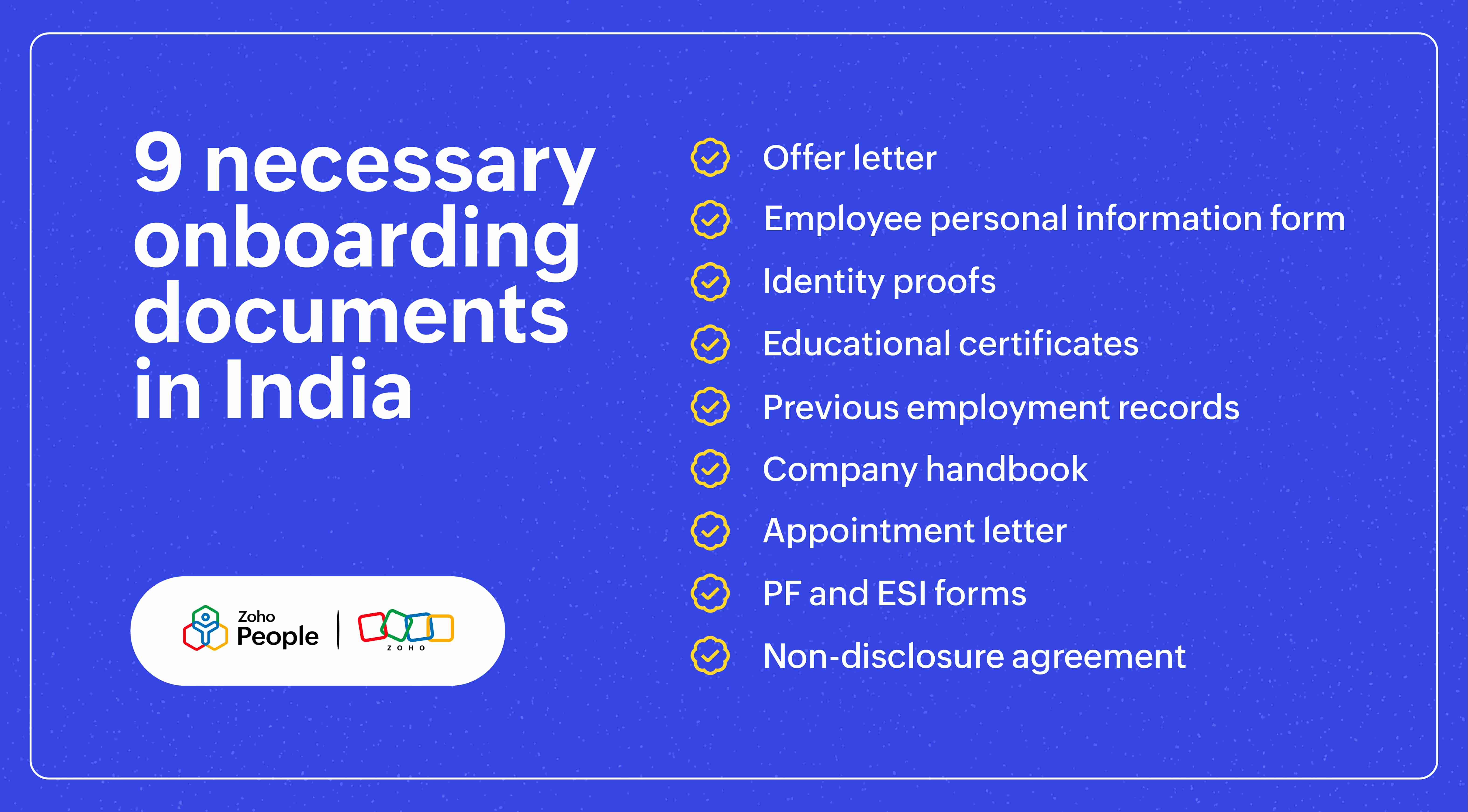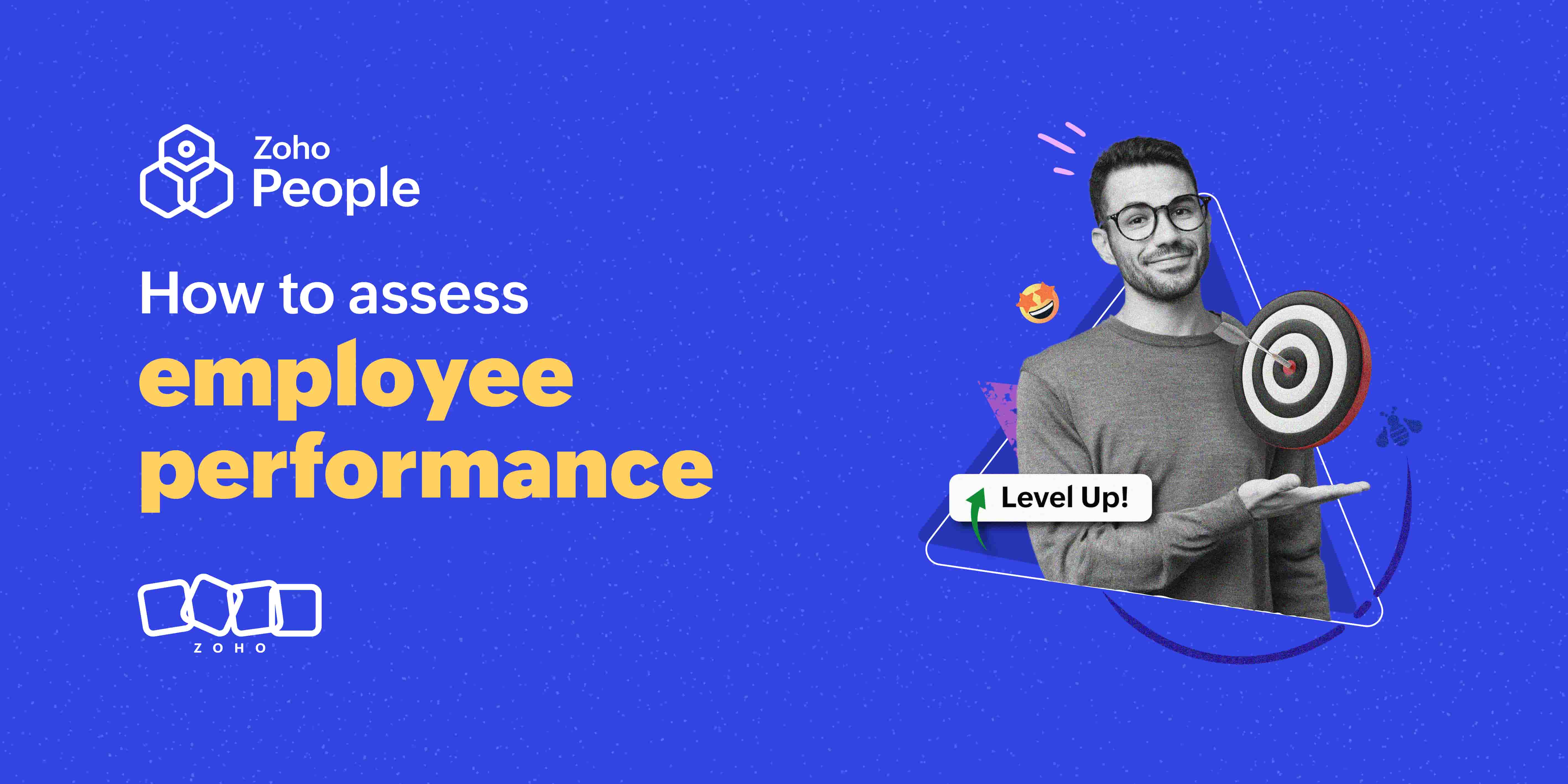- HOME
- HR insights
- Top 9 onboarding documents required in India
Top 9 onboarding documents required in India
- Last Updated : October 14, 2025
- 486 Views
- 5 Min Read

Compliance is one of the most important HR functions, and onboarding documents play a central role, ensuring that new hires meet both company policies and regional legal requirements. Collecting, verifying, and managing these documents with care is essential not just for compliance but also for delivering a smooth and positive employee experience—even before your new hires join your organization. In this blog post, we’ll walk you through the nine must-have onboarding documents every HR team in India should have in place.

1. Offer letter
An offer letter is one of the first formal documents presented to candidates once they have cleared the interview process. It provides information on the candidate's job title, date of joining, probation timeline, starting compensation, and other employment terms and conditions.
While it's not legally mandatory, most organizations use it as proof to provide clarity and avoid disputes around employment promises. For candidates, it helps them understand what to expect from their role and employment. Candidates must sign and return this letter to confirm acceptance and to avoid any possible disagreements.
Tip: While drafting your offer letter, be sure to avoid vague clauses by effectively breaking down the details. When it comes to pay information, be sure to clearly mention what counts as variable pay and fixed pay. Outline expectations around relocation, medical fitness tests, and start dates. You can also make use of an e-signature tool for quick sending and signing.
2. Employee personal information form
HR teams often exchange personal information forms with new hires to collect all the necessary information required for their database, including their full name, address, date of birth, marital status, emergency contact information, PAN number, Aadhar number, and bank account details. Maintaining accurate employee information records helps HR teams ensure compliance, respond to employee emergencies, and manage other internal processes, such as processing payroll, benefits, or medical insurance.
Tip: In order to avoid manual errors, you can make use of self-service portals that come as part of your HRMS tool to capture employee information. Once the onboarding is complete, encourage your employees to revisit these forms every year so that they remain updated. You can also encrypt fields that collect sensitive employee information, such as bank details.
3. Identity proofs
Documents of proof help HR teams confirm a new hire's identity and address. Their PAN card, Aadhar card, passport, voter's ID, driver's license, and other ID documents are collected to support other essential HR processes, such as background verification, KYC, tax deductions, payroll processing, and Provident Fund management.
Tip: Collect only the documents that are absolutely necessary to ensure compliance and complete other HR processes. Unnecessary document collection may lead to data privacy issues. Be sure to save and process sensitive information in a way that adheres to data protection laws.
4. Educational certificates
HR teams usually collect an employee’s highest qualification certificate, along with any role-specific certifications, to ensure that employees are qualified to take on the role. Organizations in regulated sectors like healthcare and aviation may be mandated by law to collect these certificates. During background verification, the new hire's educational background is confirmed based on their documents.
Tip: It's always a good idea to collect the highest qualification certificates and role-specific certifications like PMP, CA, and coding certificates. For regulated sectors, maintain a checklist of legally mandated certificates to avoid lapses. Always verify documents through accredited universities or trusted background verification partners instead of relying solely on scanned copies.
5. Previous employment records
If you're hiring experienced employees, it's important to collect previous employment records, such as relieving letters, experience letters, payslips from the last three months, Form 16, and reference letters. These documents help ensure that new hires were formally discharged from their previous duties and confirm their work history and responsibilities. During background verification, previous employers are contacted to verify those details.
Tip: Have a standardized document verification process to make sure there are no gaps in your new hire's notice period or exit formalities from their previous organization. Be sure to get your employee's UAN to transfer their Provident Fund accounts smoothly.
6. Company handbook
Since onboarding is meant to help new hires get accustomed to the organization's processes and policies, the company handbook is a mandatory component. It provides all the necessary information on company policies, code of conduct, leave policies, workplace ethics, disciplinary procedures, workplace culture, benefits, and more. It's always recommended to get an acknowledgement that new hires have completely read and understood the contents of the company handbook.
Tip: Make it a point to update your employee handbook regularly to reflect the changes made to labor laws and other applicable legal mandates. Draft the handbook in a way that resonates with employees—stay away from legalese. Make it digital so that employees can access it at their convenience.
7. Appointment letter
An appointment letter is usually extended to new hires on their first day of employment. Under the Shops and Establishments Act, it's mandatory for all organizations to offer a written appointment letter to employees. This letter should provide detailed information on employment terms, job designation and description, compensation, CTC breakup, reporting manager, start date, probation clauses, working hours, and benefits.
Tip: Avoid vague appointment letters that don't list the necessary details. Make sure that the compensation you provide and the working hours you specify are in line with the labor laws governing your region of operation. Provide these letters to your new hires on their first day of work.
8. PF and ESI forms
PF and ESI forms are mandatory statutory documents that employees must complete during onboarding to ensure access to social security benefits, such as insurance, pension, and medical coverage. Under the Employees’ Provident Fund (EPF), Form 11 is a declaration form that new hires fill out to enroll in the PF and pension scheme. In addition, Form 2 is used to collect nominee details, ensuring that the PF amount can be transferred to the designated individual in case of a mishap. Similarly, under the Employees’ State Insurance (ESI) Act, Form 1 is a declaration form through which new hires provide their personal and dependent details. This enables them and their dependents to be registered under the ESI scheme and avail its benefits.
Tip: PF and ESI enrollment are more than just mere paperwork. For PF, ensure Aadhaar is tagged with the employee’s UAN to avoid contribution delays. For ESI, double-check dependent details in Form 1, as errors here can block families from accessing benefits during emergencies.
9. Non-disclosure agreement
Most organizations require their new hires to sign non-disclosure agreements, also known as NDAs, to ensure that confidential information like client data, new strategies, and trade secrets remain protected. The agreement usually provides information on what counts as confidential information, steps to maintain security, and what kind of penalties will be levied in case of a data breach.
Tip: Use plain language to define what qualifies as confidential information, and give real-world examples so that employees can understand easily. Set obligations that are reasonable, as overly restrictive clauses can cause stress and even damage trust.
Wrapping up
Onboarding documents may seem like routine paperwork, but they are a valuable component of the process. Managing them accurately helps HR teams ensure a compliant, transparent, and engaging employee journey. Get this aspect right, and you'll create a smoother onboarding process for every new employee!
 Tarika
TarikaContent Specialist at Zoho People


